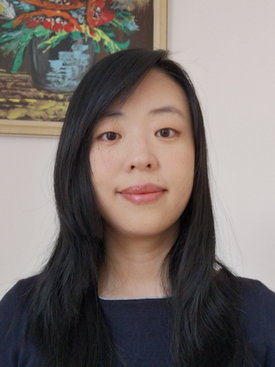A plant-powered camera and better AI to detect atmospheric threats
At the very end of last year, NWO Open Technology Programme (OTP) announced two new grants in the fields of environmental monitoring and atmospheric threat detection. Both projects are part the department of Microelectronics, and both will help scientists and society better understand our environment – to limit or otherwise mitigate the consequences of climate change.
 In the first project, Qinwen Fan and her team will develop “a plant‐powered phenocam for environmental monitoring”, that is both affordable and sustainable. NWO has granted a budget of in total one million euros. The project will work on two research activities. First is developing an efficient plant energy harvesting system to power the camera. Secondly, the group will focus on developing a low-power broad-spectral image sensor with local smart data processing. Applications for this new technology range from crop growth monitoring for smart agriculture, to local and global environmental monitoring to be used in environmental studies – for example to better understand phenomena such as the carbon cycle.
In the first project, Qinwen Fan and her team will develop “a plant‐powered phenocam for environmental monitoring”, that is both affordable and sustainable. NWO has granted a budget of in total one million euros. The project will work on two research activities. First is developing an efficient plant energy harvesting system to power the camera. Secondly, the group will focus on developing a low-power broad-spectral image sensor with local smart data processing. Applications for this new technology range from crop growth monitoring for smart agriculture, to local and global environmental monitoring to be used in environmental studies – for example to better understand phenomena such as the carbon cycle.
The research project will be carried out with industrial partners including Plant-e and IRNAS, as well as academic partners such as professors Theuwissen and Rao from TU Delft, Prof. Richardson from Northern Arizona University and Dr. Koen Hufkens van BlueGreen Labs.
 The second grant will be for a research on strategic monitoring of atmospheric threats, with a total budget of 940.000 euros, and has been awarded to Francesco Fioranelli and Marc Schleiss (from the CiTG faculty). Weather radars are essential tools for studying the atmosphere, monitoring threats such as heavy rain precipitations, and issuing early warnings for high-impact events. However, the frequency of a radar and its configuration can limit the types of weather phenomena that can be measured, as well as the resolution and accuracy of those measurements.
The second grant will be for a research on strategic monitoring of atmospheric threats, with a total budget of 940.000 euros, and has been awarded to Francesco Fioranelli and Marc Schleiss (from the CiTG faculty). Weather radars are essential tools for studying the atmosphere, monitoring threats such as heavy rain precipitations, and issuing early warnings for high-impact events. However, the frequency of a radar and its configuration can limit the types of weather phenomena that can be measured, as well as the resolution and accuracy of those measurements.
To address these limitations, both researchers and their team will develop a new AI-based control unit for coordinating the efforts of different radars in a network. This will improve the detection and prediction of localized, rapidly developing atmospheric threats while keeping a large-scale overview of the situation. The project, called SMARTER, will focus on detecting heavy rain and hail in the Greater Rotterdam area, which is of major interest for the horticultural industry and the Dutch economy. The project will be executed in collaboration with Glastuinbouw Nederland, Achmea Agro, KNMI, SkyEcho, Leonardo, RPG and HKV.
